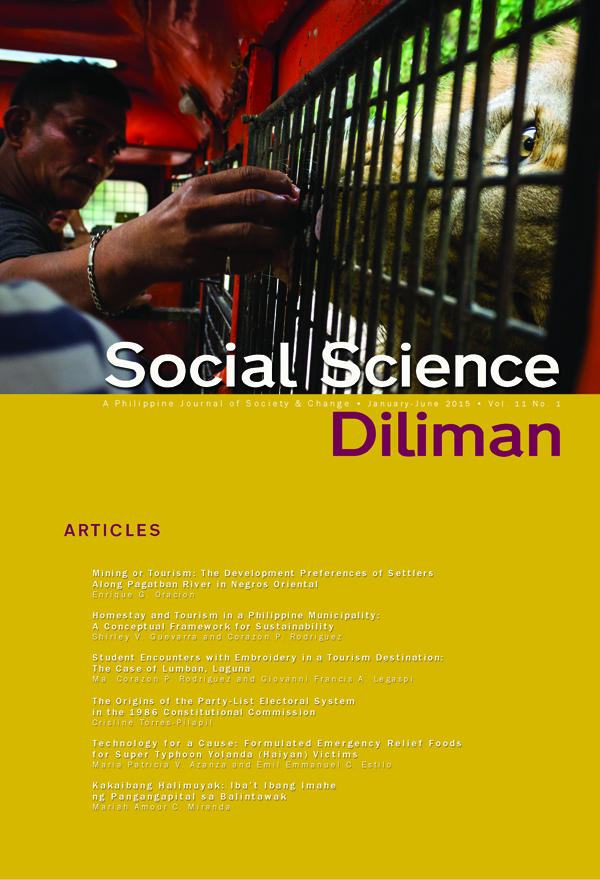Student Encounters with Philippine Embroidery in a Tourism Destination: The Case of Lumban, Laguna
Abstract
Tourism has been traditionally regarded as a business and management concern. This paper explores how cultural settings can be used to open opportunities for other stakeholders in communities to participate in touristic activities. It aims to contribute to what the authors believe to be the emerging importance of alternative definitions of tourism as a phenomenon. It documents research activities of two academics that did participant observation and interviews in a third-class municipality known for heritage skills in embroidery. Content analysis of field notes obtained months before the off icial start of the university’s semester was done to put structure in an out-of-classroomlearning activity (OCLA) of three sections of undergraduate students. Pre- and post-trip surveys were conducted to gather data on the one-day OCLA. Data obtained from students and local tourism stakeholders were analyzed quantitatively and qualitatively using a culture tourism framework. The paper ends with insights on OCLAs of undergraduate students and a description of how a visit to a destination can uncover meanings that contribute toward understanding of embroidery, self-identity, and embedded meanings of the visited place.
Keywords: Embroidery, self-identity, tourism, culture, embedded meanings, tourism stakeholders


